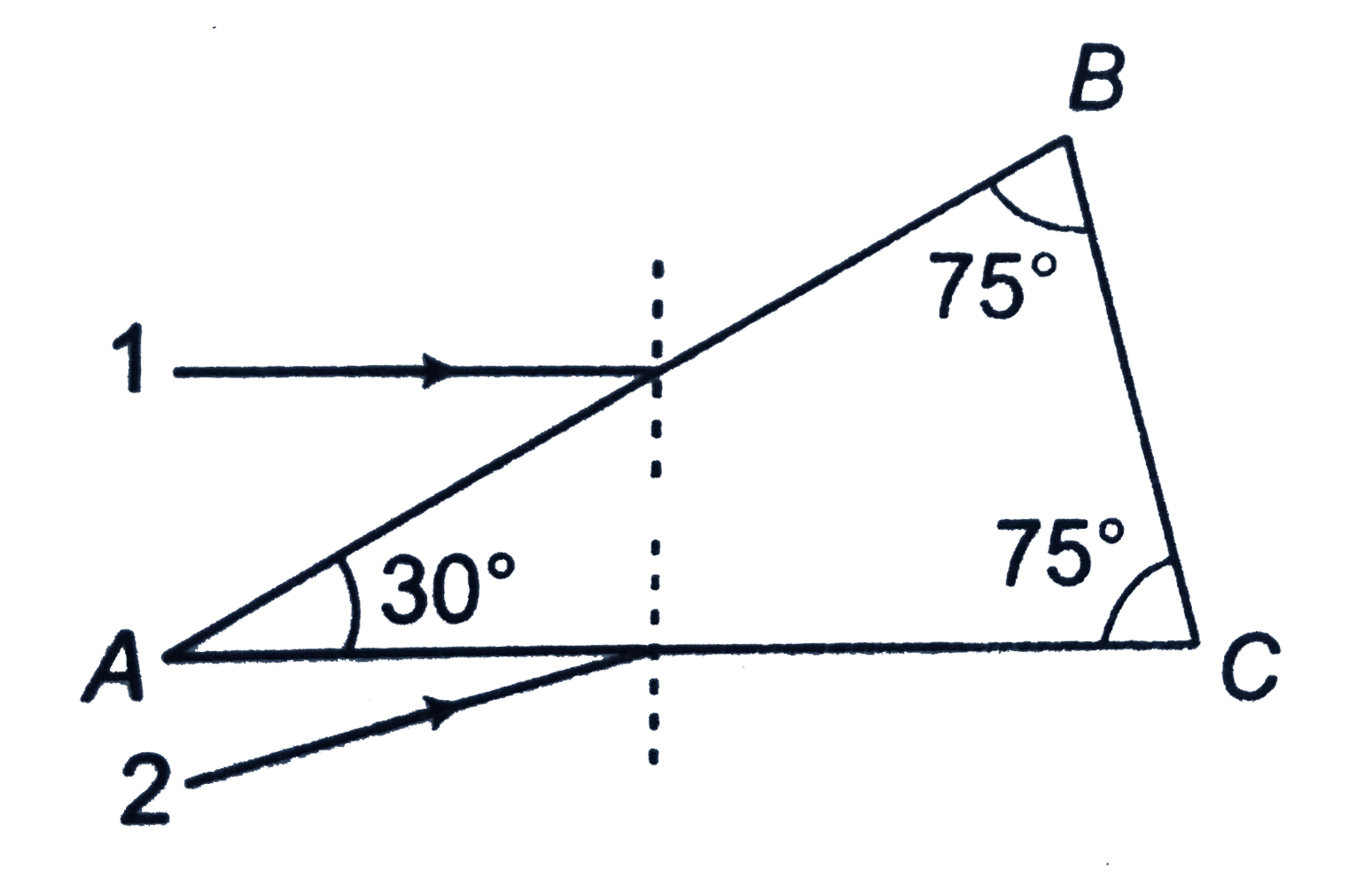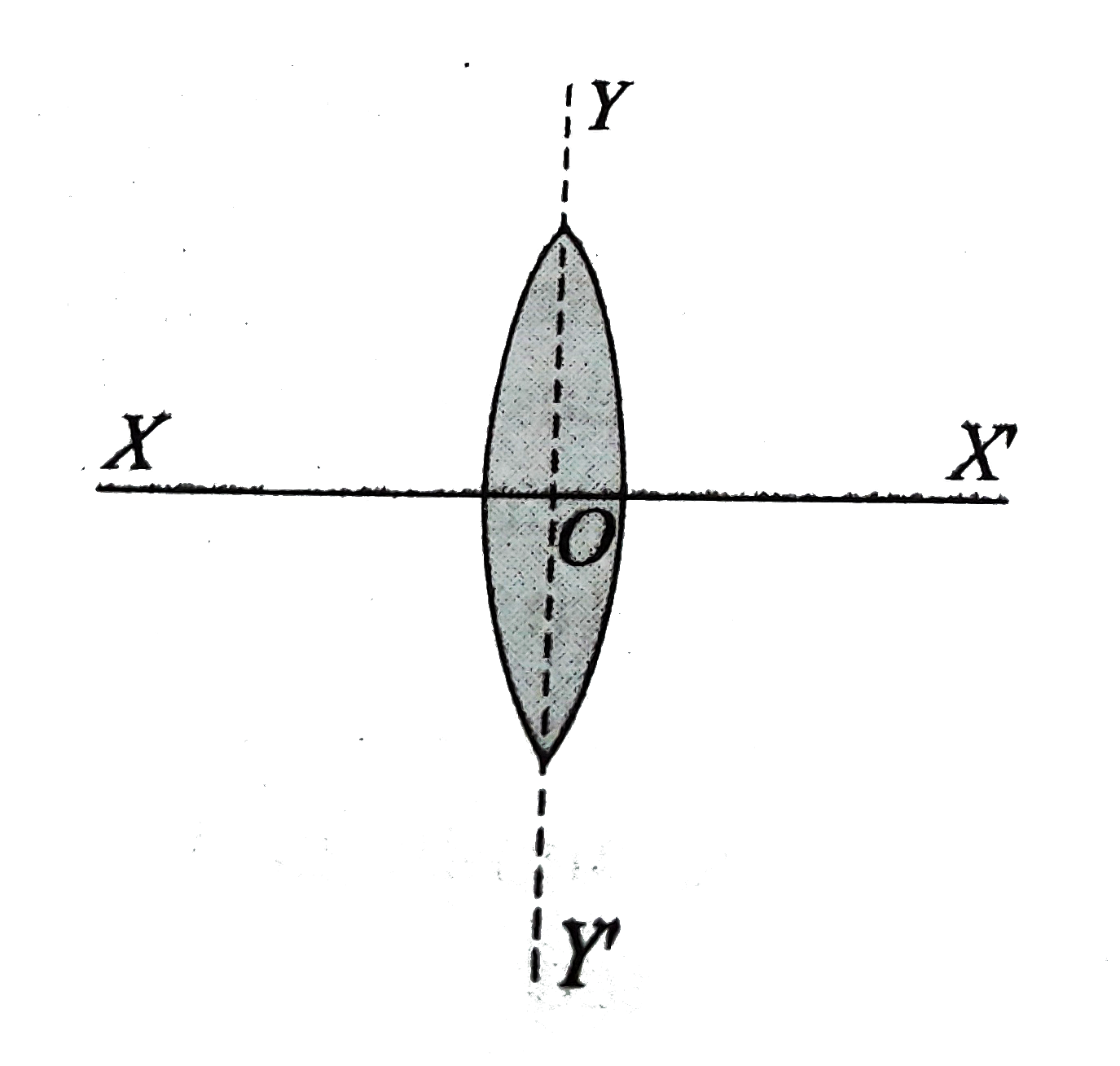Two converging lenses have focal length f1andf2 The optical axes of the two lenses coincide. This lens system is used to form an image of an object . It is observed that the size of the image does not depend on the distance between the system and object . The distance between lenses is
f1f2f1+f2
f1+f2
|f1−f2|
(f1−f2)2f1
The correct Answer is:B
To solve the problem, we will analyze the two converging lenses and derive the relationship between their focal lengths and the distance between them based on the given conditions.
1. Understanding the Setup:
- We have two converging lenses (lens 1 with focal length f1 and lens 2 with focal length f2).
- The optical axes of both lenses coincide.
- An object is placed at a distance x from lens 1.
2. Using the Lens Formula for Lens 1:
- The lens formula is given by:
1v1−1u1=1f1
- Here, u1=−x (object distance is negative as per sign convention).
- Rearranging gives:
1v1=1f1+1x
- Therefore, we can express v1 (the image distance from lens 1) as:
v1=f1xx−f1
3. Finding Object Distance for Lens 2:
- The image formed by lens 1 acts as the object for lens 2.
- The object distance for lens 2, u2, is given by:
u2=D−v1
- Substituting v1:
u2=D−f1xx−f1
4. Using the Lens Formula for Lens 2:
- For lens 2, we apply the lens formula:
1v2−1u2=1f2
- Rearranging gives:
1v2=1f2+1u2
- Substituting for u2:
v2=f2(D−v1)D−v1−f2
5. Finding Magnifications:
- The magnification m1 for lens 1 is:
m1=v1u1=f1x−f1
- The magnification m2 for lens 2 is:
m2=v2u2
6. Condition for Independence of Image Size:
- The problem states that the size of the image does not depend on the distance between the system and the object. This means the overall magnification m=m1×m2 must be independent of x.
- For this to hold true, the term D−f1−f2 must equal zero, leading to:
D=f1+f2
Final Result:
The distance between the two lenses is:
f1+f2
- We have two converging lenses (lens 1 with focal length f1 and lens 2 with focal length f2).
- The optical axes of both lenses coincide.
- An object is placed at a distance x from lens 1.
- The lens formula is given by:
1v1−1u1=1f1
- Here, u1=−x (object distance is negative as per sign convention).
- Rearranging gives:
1v1=1f1+1x
- Therefore, we can express v1 (the image distance from lens 1) as:
v1=f1xx−f1
- The image formed by lens 1 acts as the object for lens 2.
- The object distance for lens 2, u2, is given by:
u2=D−v1
- Substituting v1:
u2=D−f1xx−f1
- For lens 2, we apply the lens formula:
1v2−1u2=1f2
- Rearranging gives:
1v2=1f2+1u2
- Substituting for u2:
v2=f2(D−v1)D−v1−f2
- The magnification m1 for lens 1 is:
m1=v1u1=f1x−f1
- The magnification m2 for lens 2 is:
m2=v2u2
- The problem states that the size of the image does not depend on the distance between the system and the object. This means the overall magnification m=m1×m2 must be independent of x.
- For this to hold true, the term D−f1−f2 must equal zero, leading to:
D=f1+f2
The distance between the two lenses is:
f1+f2
Similar Questions
Two thin lenses of focal lengths f1 and f2 are in contact. The focal length of this combination is
View SolutionAn object is placed 12cm in front of a lens to form an image on a screen. The size of the image is twice that of the object. What is the distance between the object and the image?
View SolutionTwo convex lenses placed in contact form the image of a distant object at P. If the lens B is moved to the right, the image will

View SolutionTwo convex lenses placed in contact form the image of a distant object at P. If the lens B is moved to the right, the image will

View SolutionA converging lens is used to obtain an image of an object placed in front of it. The inverted image is formed between F2and2F2 of the lens.
Where is the object placed ?
View SolutionTwo convex lenses of focal lengths 0.3m and 0.05m are used to make a telescope. The distance kept between the two is
View SolutionA convex lens of focal length f forms an image which is 1/3 times the size of the object. Then, the distance of object from the lens is
View SolutionA lens of focal length 12cm forms an upright image three times the size of a real object. Find the distance in cm between the object and image.
View SolutionA converging lens forms a five fold magnified image of an object. The screen is moved towards the object by a distance d=0.5m, and the lens is shifted so that the image has the same size as the object. Find the power of lens and the initial distance between the object and the screen.
View SolutionThe focal lengths of the objective and eyelens of a microscope are 1.6 cm and 2.5 cm respectively. The distance between the two lenses is 21.7 cm. If the final image is formed at infinity, the distance between the object and the objective lens is :
View Solution
